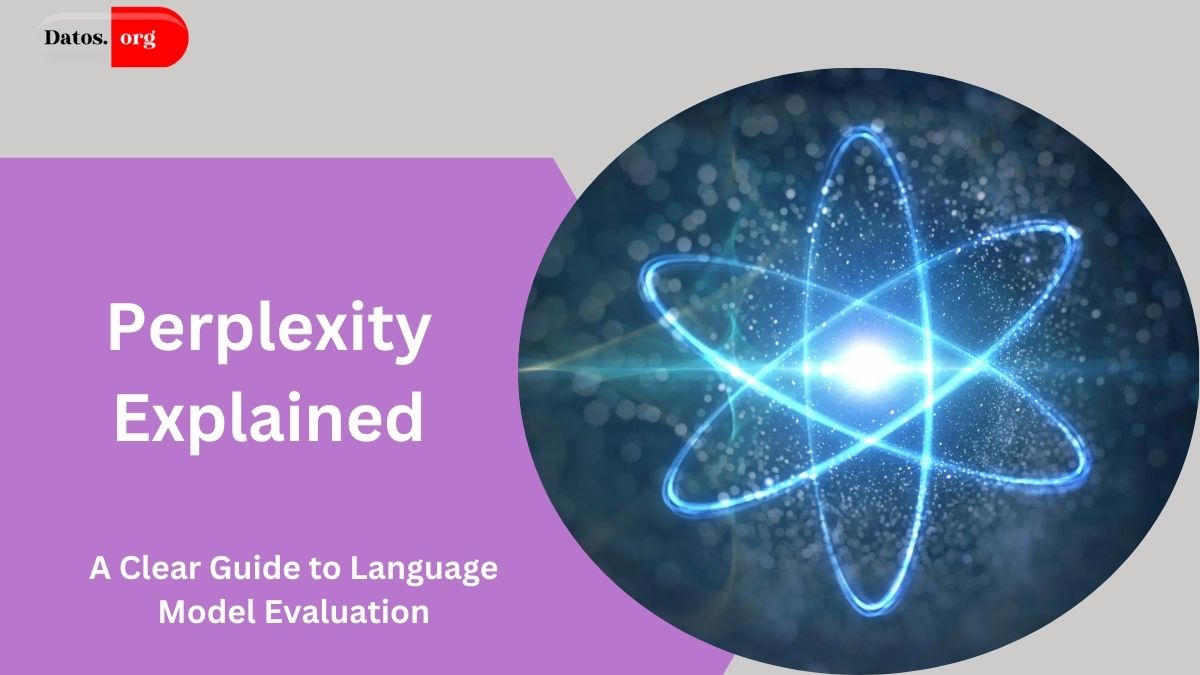When diving into the world of language models and natural language processing (NLP), one question often arises: how can we determine if a model is truly effective at generating text that makes sense?
A key player in this evaluation is a metric called perplexity.
This article will explain perplexity, why it matters, and how to use it effectively.
We’ll also touch on its limitations and explore some alternatives for a more comprehensive assessment of language models.

- What Is Perplexity?
- How Is Perplexity Calculated?
- Why Use Perplexity?
- Drawbacks of Perplexity
- Enhancing Evaluation with Additional Metrics
- 1. Factual Accuracy
- 2. Response Relevance
- Conclusion
- People May Ask
- What does low perplexity mean?
- How is perplexity calculated?
- Why is perplexity significant in NLP?
- Can perplexity measure creativity?
What Is Perplexity?
Perplexity is a numerical value that helps us understand how well a language model predicts the next word in a sequence. It is a measure of the model’s confidence in its choices.
- Lower perplexity means the model is more specific about its predictions.
- Higher perplexity indicates that the model needs to be more specific.
A language model that feels confident in its predictions is more likely to be accurate.
MUST READ: SSIS 816: A Simple Guide to Data Integration and ETL
How Is Perplexity Calculated?
To calculate perplexity, we first need to determine the probability of a sequence of words. Let’s consider a simple example:
Imagine a sentence: “The cat sat on the mat.” If our language model calculates the probability of generating this exact sequence as 0.01, we can find the perplexity using this formula:
- Calculate the Negative Log Likelihood (NLL):
- NLL = -log(0.01) = 4.605
- Average NLL: If the sentence has six words, we divide by six.
- Calculate Perplexity:
- Perplexity = e^(Average NLL)
This will give us a score that reflects how many choices the model considers when generating text.
ALSO READ : Pixwox: Safeguard Your Privacy with the Ultimate Instagram Viewer
Why Use Perplexity?
Perplexity has several advantages when evaluating language models:
- Assessing Fluency: It helps gauge how smooth and coherent the generated text is.
- Generalisation: A lower perplexity score on new data suggests that the model can adapt well to unfamiliar inputs.
- Easy Comparisons: We can easily compare the performance of different models by calculating perplexity on a standard dataset.
- Optimisation Insights: Tracking perplexity can guide improvements in model design.
Drawbacks of Perplexity
While perplexity is helpful, it’s not perfect. Here are some limitations to consider:
- Local vs. Global Context: Perplexity focuses on immediate predictions, which may overlook the broader context of the text.
- Creativity and Ambiguity: It doesn’t measure a model’s ability to handle nuances in language or produce creative content.
- Vocabulary Issues: A model’s vocabulary size can affect its performance. If it encounters unknown words, perplexity may increase, even if the overall output is coherent.
- Overfitting Risks: A model could perform well on its training data but struggle with real-world applications. A low perplexity score doesn’t always guarantee broad effectiveness.
Enhancing Evaluation with Additional Metrics
We can look beyond perplexity to get a fuller picture of a model’s capabilities. Here are a couple of helpful alternatives:
1. Factual Accuracy
Adding a metric for factual accuracy allows us to check if the generated information aligns with reality.
This is crucial for applications like news articles or answering questions, where correctness is critical.
2. Response Relevance
Evaluating how relevant the generated text is to user queries can also enhance our understanding of a model’s effectiveness.
This is particularly important in applications like chatbots, where context and user intent are vital.
Conclusion
Perplexity is a valuable tool for assessing language models, but it has limitations.
We can better evaluate a model’s performance by combining it with additional metrics like factual accuracy and response relevance.
For those exploring these metrics further, consider researching resources that dive deeper into LLM evaluations.
Understanding these nuances will help us create better, more effective language models in the future!
People May Ask
What does low perplexity mean?
Low perplexity indicates that a language model is confident in its predictions, suggesting it is more likely to generate accurate and coherent text.
How is perplexity calculated?
Perplexity is calculated by finding the probability of a sequence of words, using that probability to compute the negative log-likelihood, and applying the exponential function.
Why is perplexity significant in NLP?
Perplexity is essential because it provides insights into a model’s fluency, coherence, and ability to generalise across different contexts, making it a valuable metric for evaluation.
Can perplexity measure creativity?
No, perplexity primarily assesses fluency and coherence. It does not evaluate a model’s ability to handle creative tasks or linguistic ambiguities.
Click here to learn more.